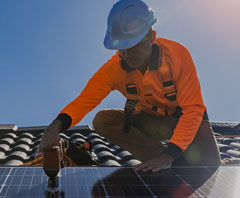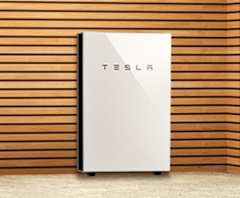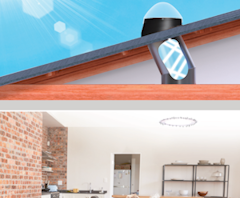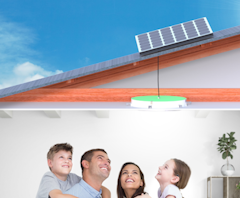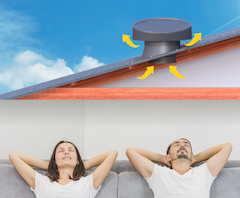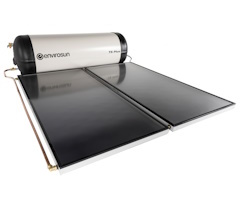SOLAR FAQ
Yes! Solar panels pay for themselves so are a great investment. Choosing a high-quality solar system from a trusted, licenced, and insured solar installation company such as SolarBright ensures you will have a system that will give you years of trouble-free operation.
How long it takes to pay off solar depends on the size of the system, the cost, its power production and your consumption patterns – that is, how much of the electricity generated by the system that you consume in your home rather than export to the grid. Your SolarBright consultant can work through the numbers for your system with you to estimate your payback time.In broad terms a 6.6kW system in NSW will produce nearly 9,600kWh of power per year according to the Clean Energy Council (CEC) guidelines. If you consume 65% of the power generated at a power cost of 29c/kWh and export the balance to the grid at a feed in tariff of 10c/kWh the system can generate savings of $1,200 per year for you.
Your solar system will begin saving you money from day one. Remember that every kWh of power that you consume from the system will save you 30c.In order to get your feed in tariff for any excess power you produce and export back to the grid you will need to have a net meter installed by your energy provider. Once your solar system is installed you need to contact to your provider to organise their installation of the net meter. Once this is installed they will be able to measure your power exports and pay you the feed in tariff.
Your SolarBright consultant will analyse your power bills and discuss your household usage patterns and run through the numbers with you to see if solar is the right choice for your household.
There is not a rebate as such but there are incentives in the form of Small-Scale Technology Certificates (STC’s) attached to panels according to the size of the system.
An STC is a Small-Scale Technology Certificate, a tradable certificate sold to fossil fuel power generators to offset their carbon emissions. As they are sold on an open market their value can fluctuate and are currently approximately $30 each. The number of STC’s applicable to your solar system is governed by the size of the solar system. The STC’s are regulated by the Clean Energy Council.
SolarBright takes care of all the paperwork. We calculate the value of the STC incentives for your system and apply it to your pricing in our solar proposal pricing for you.
Solar panels contain modules made of very thin silicon crystal wafers. When sunlight strikes the silicon wafers it excites the atoms in the silicon releasing electrons and producing electricity. Free power from the sun!
This depends on whether you have a single phase or three phase electrical system. Under CEC guidelines single phase homes are limited to a 5kW inverter which supports a maximum size solar system of 6.6kW. Three phase household electrical systems support larger solar installations. We have customers who install 20 and 30kW systems to cover the power needs of larger properties.
Solar panels are there for 20 to 30 years so if you have major issues with the roof the answer is yes. If your roof is in decent condition some maintenance before install might be required but not necessary. If you have tiles covered with mildew, we recommend you have the roof cleaned.
Most roof types are suitable for solar as we have mounting bracket and systems for tile and metal roofs. Tilt frame mounts can be used on roofs with shallow pitches. On a flat concrete slab roof we use ballast mounting so there is no danger of compromising water-proof membranes. Your SolarBright consultant will assess your roof and advise you accordingly.
There many ways to define best. It is widely acknowledged by solar installation companies world- wide that LG solar panels are the best available solar panels for both home and commercial solar installations. Why are LG solar panels considered the best solar panels? It is a combination of factors including:
- Superior performance – we regularly see LG panels outperform other brand panels with the same rated output by up to 10%
- High module efficiency – 20.1% on the 345W N1C-V5 LG Neon 2 panels and 21.4% on 370W LG370Q1C LG panels.
- 25 Years Product warranty (parts and labour) and a 25-year performance warranty
- Extremely low Light Induced Degradation (LID)
- Corrosion resistance certification for coastal installations
- Positive output tolerance of 0/+3% so a flash test on 345 Watt panel will show between 345W to 355W
- Enhanced low light performance
“Tier 1” refers to a financial only ranking scale developed by Bloomberg New Energy Finance Corporation that ranks companies manufacturing solar panels according to their financial stability or “bankability.” It is not a technical ranking of the panels that they manufacture or an indication of panel quality or performance.
For sure they are! China is the largest supplier of solar panels in the world. What isn’t made in china these days? Also be aware that you get what you pay for. There are inferior quality panels offered on the market at low prices. You may save $1,000 on the installation cost but it may cost you many times that in lost production due the inferior nature and poor performance of the panels.With 12,000 installs over 12-years we obviously choose to supply high quality T1 panels from reputable suppliers as well as other brands that are not made in China. We are an authorized LG solar dealer and offer the LG Solar panels widely acknowledged as the best solar panels available.
In order to reach rock bottom pricing, compromises need to be made on the installation quality and solar panel quality. Since 2011 hundreds of solar companies have come and gone in NSW. SolarBright offers high quality products with a high quality installation service by CEC accredited installers at fair prices. Given we have been in business for over 11 years with over 11 thousand installs, every one of our customers has the assurance their warranty is covered because by charging a fair price we can run the business efficiently and ultimately safeguard your investment. Would you rather go with a company offering this peace of mind or risk your most valuable asset – your home – with cheap, poor quality solar?
A 6 or 6.6kW system generally suits most families. Your SolarBright consultant will look at your power bill and consumption patterns and assess what size system will suit your situation. Generally, these days solar is so affordable that sometimes you should just fit as many panels as you can (6.6KW) because of the small price difference.
A combination of a correctly sized solar system and solar battery can reduce your bill to nearly zero. The majority of solar systems installed are grid connected so even if the solar covers all of your power requirements your energy provider will still be charging you a network access fee and the feed in tariff from your power exports may cover that.
A study by Origin Energy in 2015 shows that 85% of Australians believe that solar improved property value. A 2018 study of 22,822 home sale prices in the US found that on average solar panels increased the home value by 3.74% – US$14,320 more than homes without solar.Another found that homes with solar panels – and therefor lower electricity bills – sell faster.
The warranties on most T1 panels are 10 years for the product and workmanship on the panel, and 25 years on the panel performance. (See below for an explanation of performance warranty.)The LG solar panels we install have one of the industry best warranties with a 25-year product warranty and a 25-year performance warranty.
Most inverters have minimum 5-year warranty. Our SolaX inverters have 10-year warranty.
SolarBright covers our solar installation workmanship with a 10-year warranty.
The power output of solar panels degrades over time. A solar panel performance warranty is a manufacturers’ warranty that only covers the performance of the panel in terms of power output and how much the panel output degrades over time. It does not cover the panel as a product. The standard performance warranty is 25-years and most panels degrade over 25 years to around 80% of their original output.
If you need to make a warranty claim contact SolarBright and we will manage the warranty process.
A standard grid connected solar system will not supply your home with power during a blackout. A solar system with a correctly optioned and configured battery can protect you from blackouts. If you want protection from blackouts talk to your SolarBright consultant about battery options for your solar system.
Every solar system must have an inverter. Solar panels produce electricity as DC (Direct Current). A solar string inverter is an electrical device that converts the electricity from DC to 240v AC (Alternating Current) so the power can be consumed in your home and any excess exported to the grid.With a string inverter the panels must be wired in series and the inverter will handle 2 strings of panels. In a string all panels must face the same direction and the all the panels in a string only work as well as the weakest panel – another reason it is important to choose good panels.
The inverter is usually wall mounted next to your electricity meter box.
It would probably be best to organise one of our friendly, knowledgeable consultants to come out and do the sums with you.
A micro inverter small inverter that is mounted on the back of the solar panel converting panel produced DC electricity to AC. Each panel in an array with micro inverters is managed independently by its micro inverter.
A solar optimiser is small device mounted on the back of a solar panel to help optimise the power production of each single solar panel. Solar optimisers overcome the limitations of standard string inverters of limiting all panels in the string to the output of the weakest panel and having all the panels in a string facing the same direction.If you are likely to have shading issues your SolarBright consultant will recommend optimisers. One of the best optimisation solutions we offer is from Solar Edge.
Both are important. Good panel quality is very important because of the long lifetime expectation of the panels. Poor quality panels can cost you thousands in lost production over the life of the system.
Making sure the panels are clean is important. As most home solar panels are mounted with the tilt of your roof, they are self-cleaning with rain. If you notice bird droppings or dirty sections on the panels you should organise to have them cleaned and it is a good idea to have the panels cleaned every couple of years.Good quality panels like the brands installed by SolarBright will give you trouble free service.
Yes – we partner with specific finance companies who can finance solar panels and systems. Please advise your SolarBright consultant and they can get the process underway with you.
It all depends on how big your current inverter is. Normally we would suggest adding a separate system to increase your production due to the technology changes over the past few years as well meeting current installation standards. For example we are now starting at 300w panels and the inverters are WiFi enabled.
